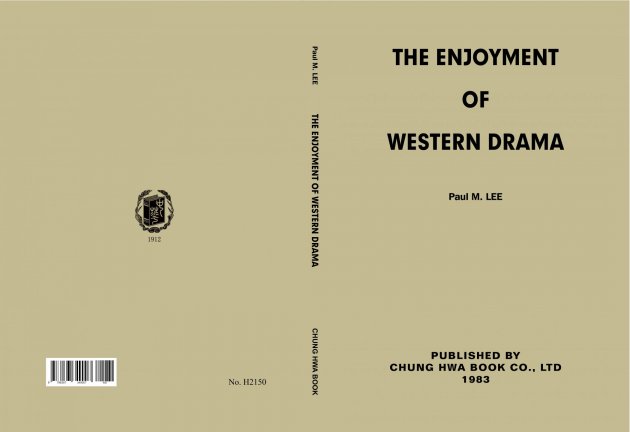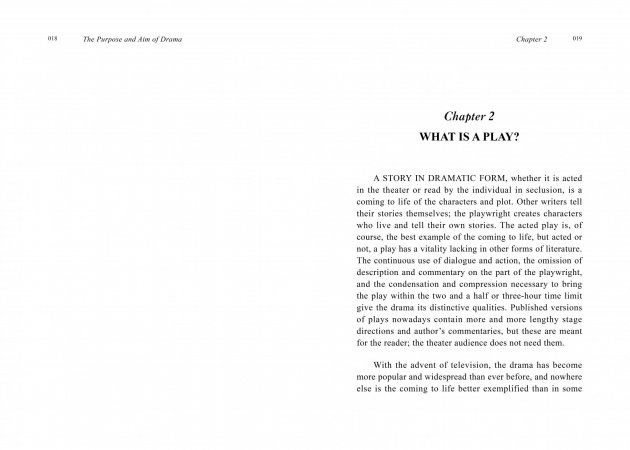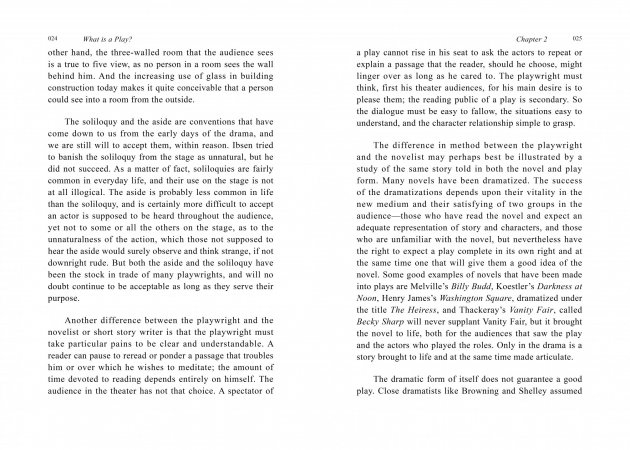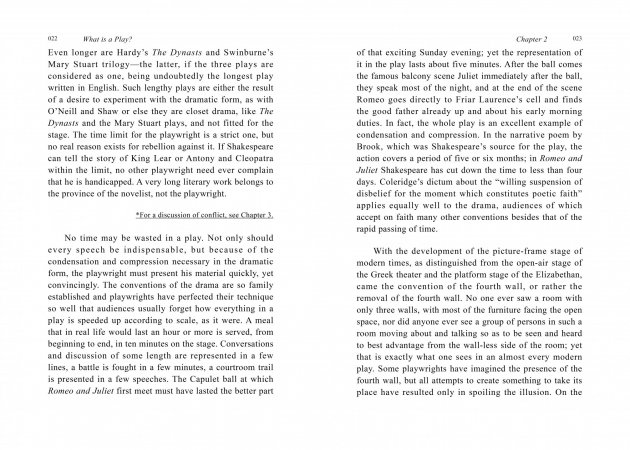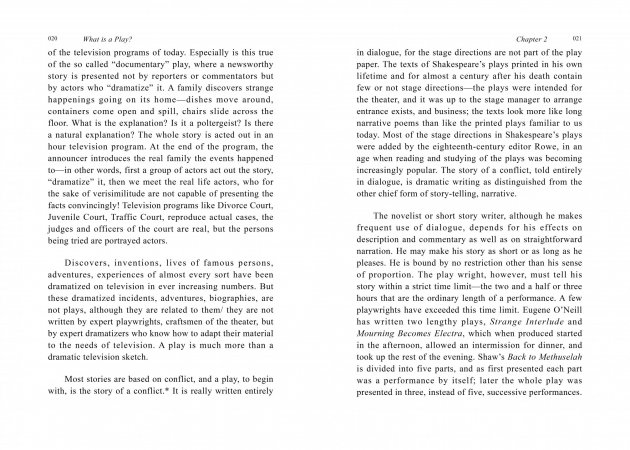The Enjoyment of Western Drama
H2150
榜书优惠88折
我要购买
货到通知我
我要兑换
产品说明
图书资料:
作者简介:
目次:
序文:
- 作 者:PAUL M. LEE(李慕白)着
- 出版日期:2023年8月再版
- 版本备注:据1983年10月初版复刻重制
- 页 数:648页
- ISBN:978-626-7349-00-7
- 图书尺寸:G16K(A5)
本书探讨如何深度欣赏戏剧。由戏剧的目的谈起,接续展现剧本结构、悲剧、喜剧、严肃剧、文学性、戏剧元素等,最后提出如何评判一出剧的看法。
作者认为,戏剧不仅仅是剧院里的演出,也不只是一页纸上的文字;它既不是剧作家的个人陈述,也不是产生它的文化的线索,每一位阅听者都可以按自己的感受与节奏对戏剧的意义、结构和象征性进行分析,以充分享受它带来的乐趣。
作者认为,戏剧不仅仅是剧院里的演出,也不只是一页纸上的文字;它既不是剧作家的个人陈述,也不是产生它的文化的线索,每一位阅听者都可以按自己的感受与节奏对戏剧的意义、结构和象征性进行分析,以充分享受它带来的乐趣。
作者简介:
無
目次:
Preface
1. The Purpose and Aim of Drama
2. What is a Play?
3. Conflict: The Essence of Drama
4. The Structure of a Play
5. Tragedy
6. Comedy
7. Serious-Drama, Comedy-Drama, and Other Types
8. Literary Movements and Reality in Drama
9. Elements of Drama
10. How to Judge a Play
Bibliography
1. The Purpose and Aim of Drama
2. What is a Play?
3. Conflict: The Essence of Drama
4. The Structure of a Play
5. Tragedy
6. Comedy
7. Serious-Drama, Comedy-Drama, and Other Types
8. Literary Movements and Reality in Drama
9. Elements of Drama
10. How to Judge a Play
Bibliography
序文:
PREFACE
Reading a play well is often more difficult than seeing it well performed. In order to experience the full impact of a playwright’s work, a reader must himself visualize and create all its dimensions. In a theatrical production the burden of interpretation is largely carried, with greater or lesser skill, by the director, actors and designers. Through speech, movement, gesture, rhythm, scenery, costume and lighting, the meaning and emotion of the play are communicated to the audience. The solitary reader misses the emotional contagion of a responsive audience, the atmosphere created by light, sound and speech, the cumulative effect of climatic action, and the personal qualities of the living actor. As an individual, you must exercise your imagination with cues from the printed page alone. To help you envision your own production, this anthology goes beyond the texts of the plays.
The opening chapter surveys the starting points and purposes of drama, its genres and techniques. This account may be read straight through, or piecemeal, and either before or after your own recreation of a play.
As a reader you have the opportunity for thoughtful analysis of the meaning, structure and symbolic aspects of the drama at your own pace. To enjoy a play fully is to realize that it is more than an evening’s division in the theater, more than so many words on a page; it is not once a personal statement of the dramatist and a clue to the culture that produced it.
I am grateful to the various persons and institutions for their assistance: to my associate in the Department of English, Professor William Melnitz of the University of California, Los Angeles; to Professor Thomas Marcparrott of Princeton University; to Professor Wendell Cole of Stanford University; to the Center Theater Group Ahmanson; to the Amazing Blue Ribbon 400 Committee. Again, I wish to express my gratitude to Rose Lam for giving her constant encouragement to my writing of this book.
October, 1983
Paul M. Lee
Reading a play well is often more difficult than seeing it well performed. In order to experience the full impact of a playwright’s work, a reader must himself visualize and create all its dimensions. In a theatrical production the burden of interpretation is largely carried, with greater or lesser skill, by the director, actors and designers. Through speech, movement, gesture, rhythm, scenery, costume and lighting, the meaning and emotion of the play are communicated to the audience. The solitary reader misses the emotional contagion of a responsive audience, the atmosphere created by light, sound and speech, the cumulative effect of climatic action, and the personal qualities of the living actor. As an individual, you must exercise your imagination with cues from the printed page alone. To help you envision your own production, this anthology goes beyond the texts of the plays.
The opening chapter surveys the starting points and purposes of drama, its genres and techniques. This account may be read straight through, or piecemeal, and either before or after your own recreation of a play.
As a reader you have the opportunity for thoughtful analysis of the meaning, structure and symbolic aspects of the drama at your own pace. To enjoy a play fully is to realize that it is more than an evening’s division in the theater, more than so many words on a page; it is not once a personal statement of the dramatist and a clue to the culture that produced it.
I am grateful to the various persons and institutions for their assistance: to my associate in the Department of English, Professor William Melnitz of the University of California, Los Angeles; to Professor Thomas Marcparrott of Princeton University; to Professor Wendell Cole of Stanford University; to the Center Theater Group Ahmanson; to the Amazing Blue Ribbon 400 Committee. Again, I wish to express my gratitude to Rose Lam for giving her constant encouragement to my writing of this book.
October, 1983
Paul M. Lee

